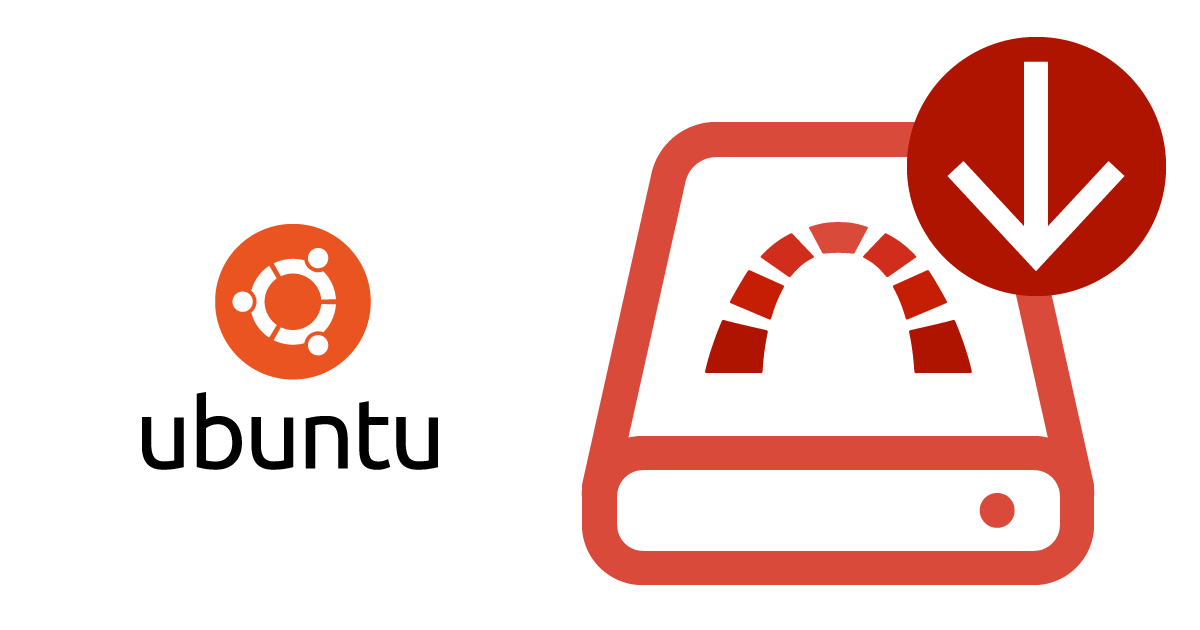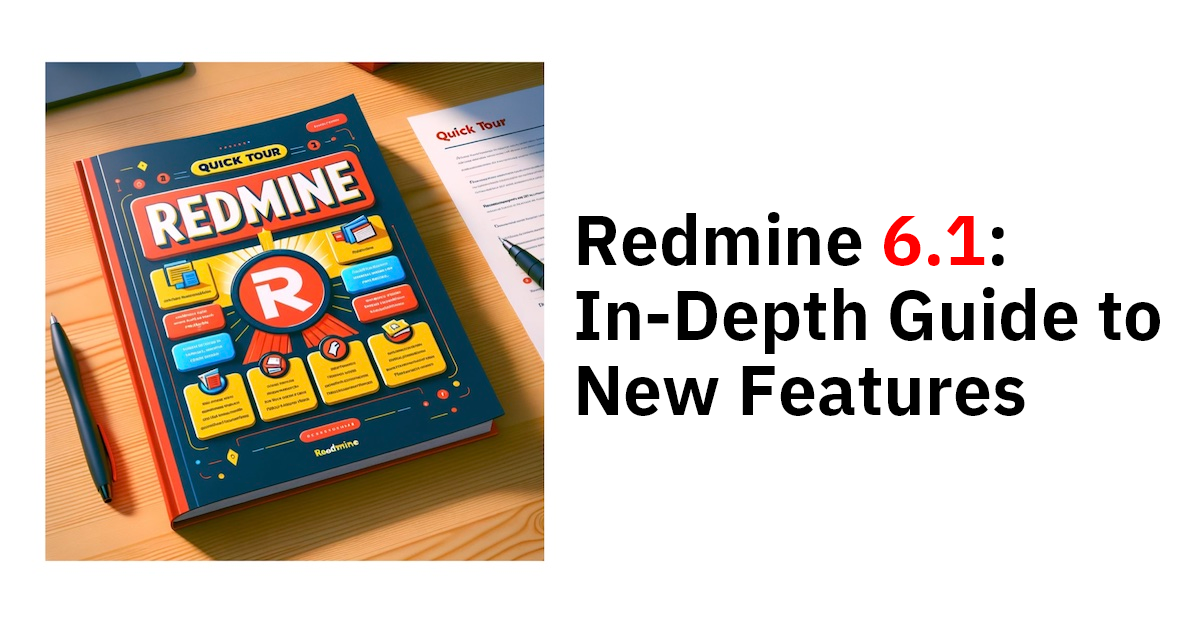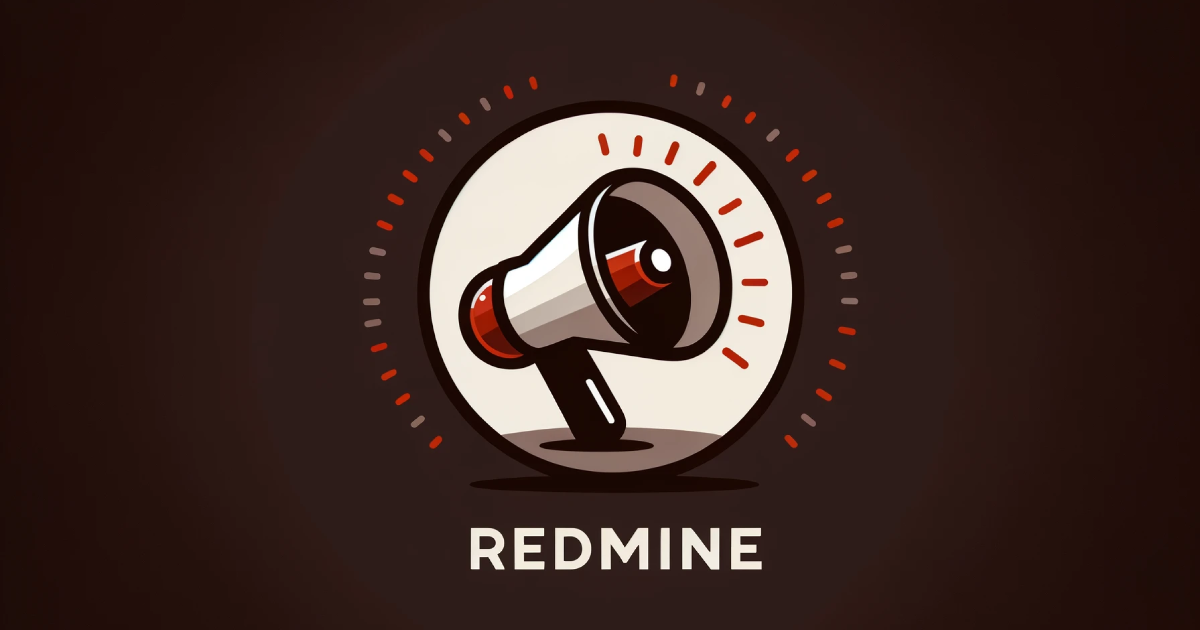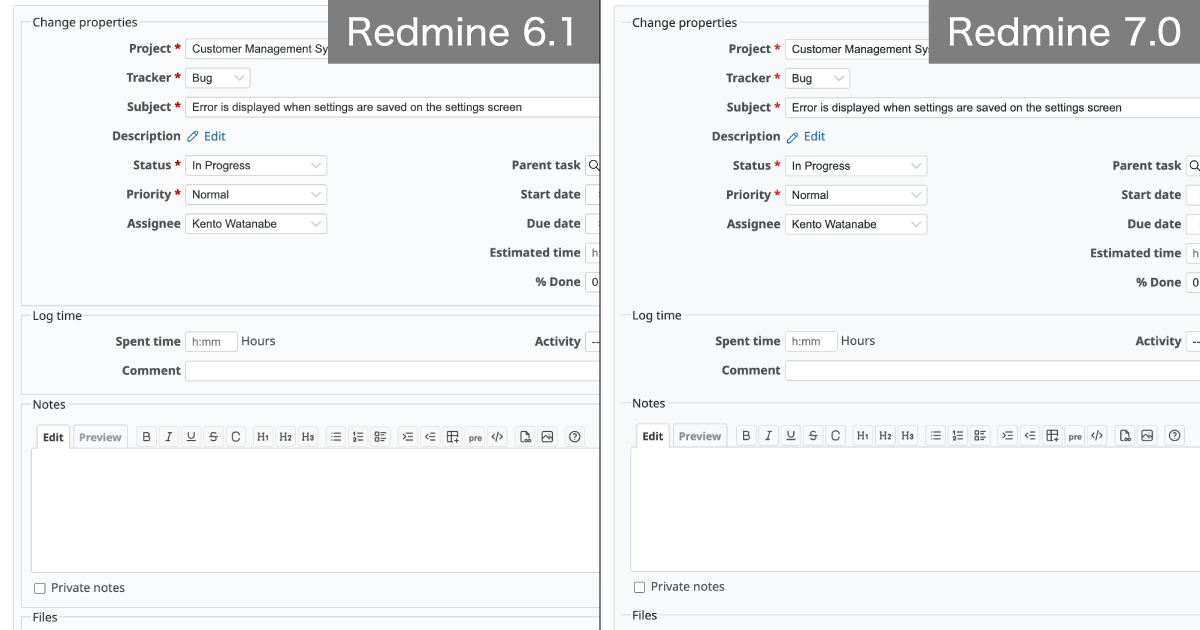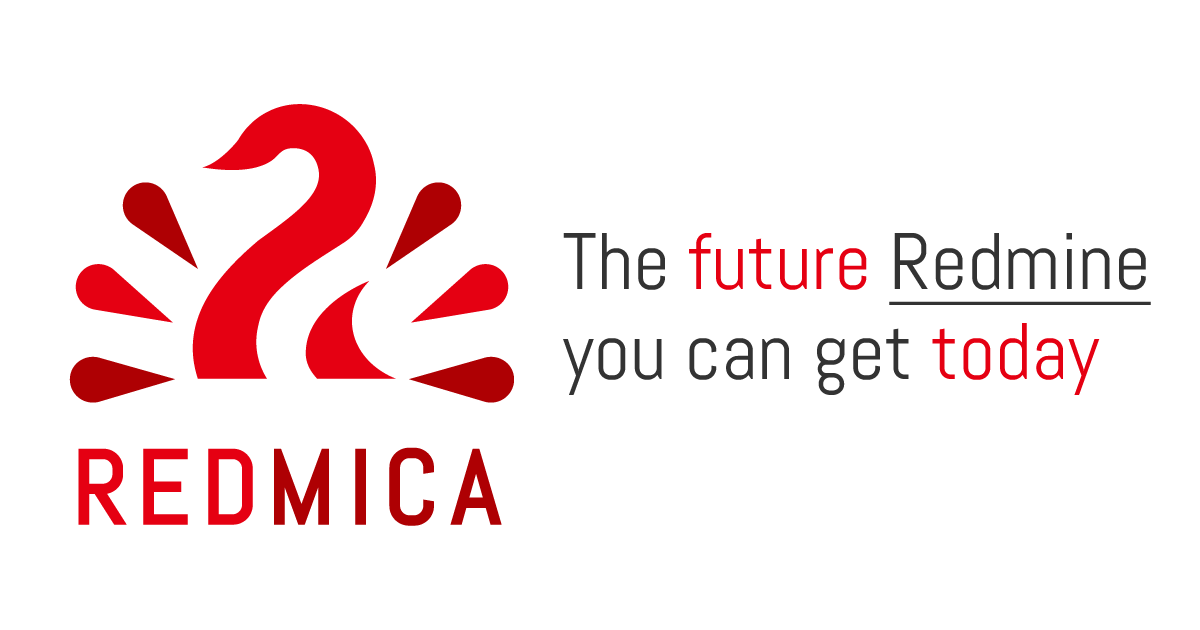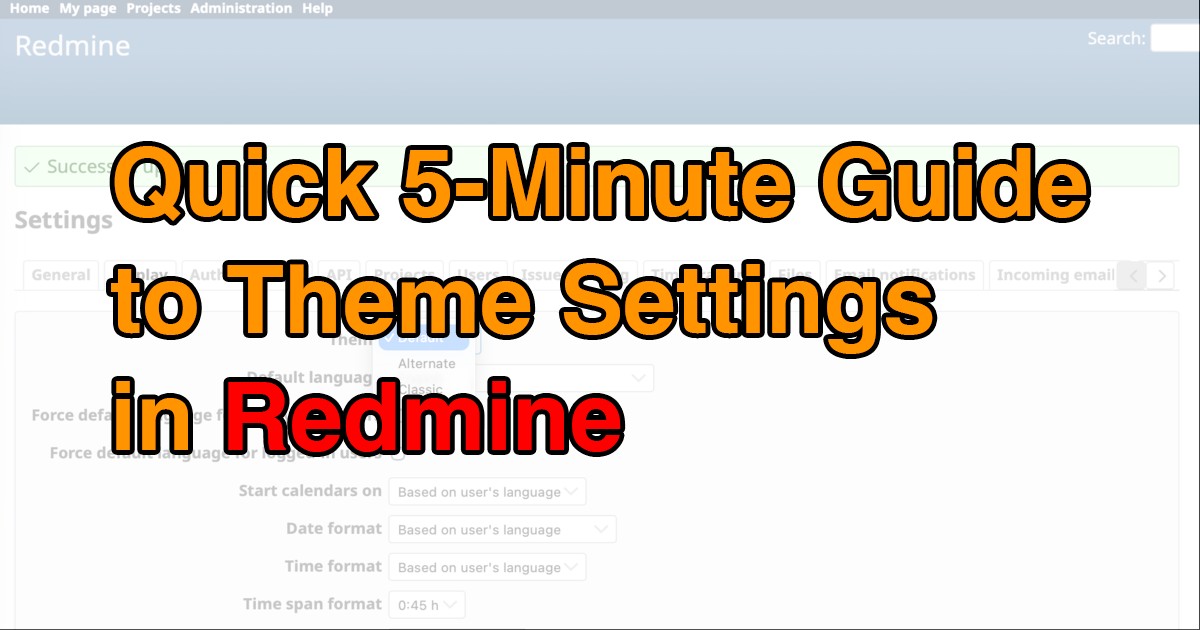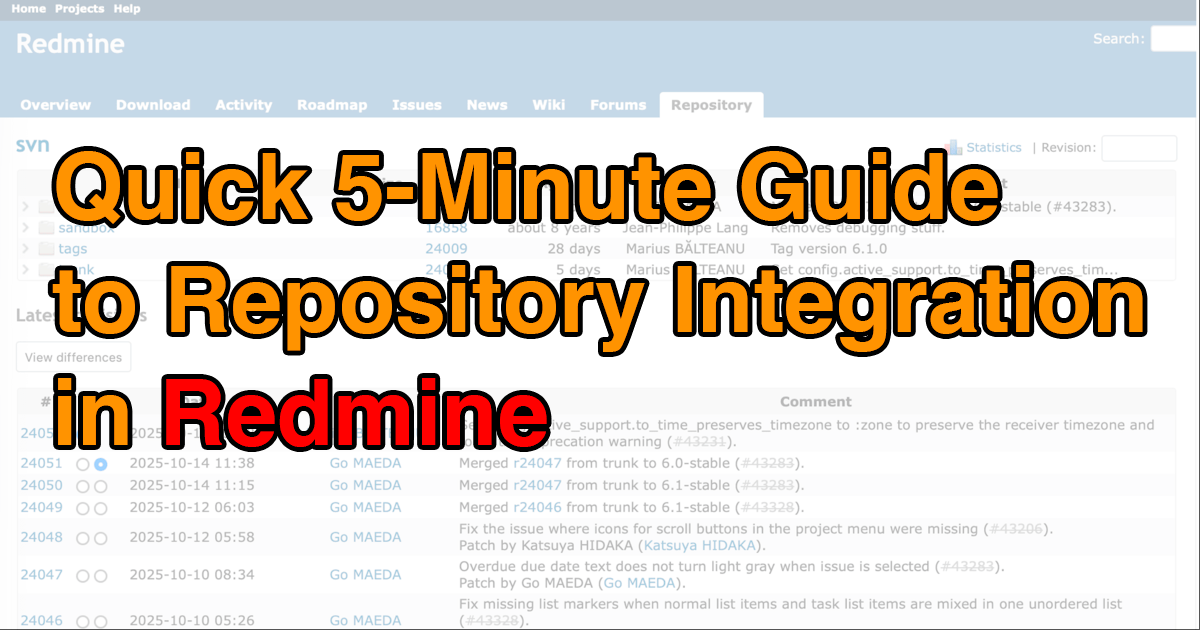Quick 5-Minute Guide to the Email Notification Settings in Redmine

In this article, we’ll walk through how email notifications work in Redmine, what kind of emails you receive, when they are triggered, and how to configure them effectively—including the reminder feature that helps teams stay on top of deadlines.
Table of Contents
- Overview of Email Notifications
- What Kind of Emails Are Sent
- When Email Notifications Are Triggered
- Configuration for Using Email Notifications
- Due Date Reminder Functionality
Overview of Email Notifications
Redmine manages tasks and bugs by tracking them as issues. With features like issue lists, Gantt charts, and roadmaps, project progress can be visualized and managed effectively.
However, constantly checking Redmine for updates isn't always practical. For example, if another team member reassigns an issue to you, you might miss it unless you're actively watching the screen at that moment.
While Redmine doesn’t provide on-screen pop-up notifications, it does support email notifications. By using a mail client that displays desktop notifications for new emails, you can stay informed of changes as soon as they happen.
Redmine also includes a reminder feature that sends a list of issues nearing or past their due date by email—helping prevent important tasks from being missed.
What Kind of Emails Are Sent

Issue Update Notification Emails
When an issue is updated, Redmine sends an email structured as follows:
The subject line includes the project name, tracker name, issue number, and issue title—so you can quickly understand what was updated without even opening the message.
The body contains the issue number, the user who made the change, the updated fields, any comments, and a summary of the issue. The body of the email shows who made which updates. Both the issue number and title are hyperlinked to the issue’s detail page, allowing you to view the full information with a single click.

Wiki Update Notification Emails
When a Wiki page is updated, Redmine sends an email with:
Subject line: Shows the project name and the title of the updated Wiki page, so you can quickly see what was changed without opening the message.
Body: Includes the page title (linked to the Wiki page), the user who made the changes, and a link to view the differences between the previous and current versions.
It’s easy to open the updated page directly, and the diff view lets you clearly see what content was added or modified.
When Email Notifications Are Triggered
Redmine can send notifications for the following actions:
- Adding a new issue
- Updating an issue
- Adding a comment to an issue
- Changing the issue status
- Changing the assignee
- Changing the priority
- Updating the target version
- Attaching a file to an issue
- Posting news
- Commenting on news
- Adding documents
- Adding files
- Posting messages in forums
- Creating Wiki pages
- Updating Wiki pages
Notifications are only sent if the administrator has enabled email delivery for these actions, and if the user has opted in to receive them.
New in Redmine 6.0.0: Notifications for Attached Files
Previously, email notifications for file attachments were only sent if the “Issue updated” option was enabled under Administration → Settings → Email notifications. To avoid too many alerts, many users turned this off and relied on triggers like “Note added” or “Status updated”—meaning file-only updates went unnoticed.
Redmine 6.0.0 adds a new option: “Attachment added.” With this enabled, you’ll get notifications even when a file is attached without any comment or status change. It’s a simple way to stay informed without enabling the more general “Issue updated” setting.
Configuration for Using Email Notifications
Administrator Settings
To enable email notifications in Redmine, administrators must:
- Configure the SMTP server in config/configuration.yml. For detailed instructions, refer to the Redmine documentation:Email Configuration
- Set the host name and protocol under Administration → Settings → General to ensure that links in emails point correctly to the Redmine server.

Hostname, Path, and Protocol Settings
- Specify the sender's email address under Administration → Settings → Email Notifications.

Sender Address Settings
- Select which events should trigger email notifications in the same Email Notifications settings screen.

Notification Trigger Settings
- Optionally, customize the email headers and footers. These are not required and can be modified or removed as needed.

Email Header & Footer Settings
User Settings
Each user can customize how and when they receive email notifications. For example, they can:
- Receive notifications for issues assigned to them
- Get updates on issues they are watching
- Disable notifications for changes they find less relevant

Manage notifications in “My account” > “Email notifications”
Due Date Reminder Functionality
Redmine includes a reminder feature that sends users an email listing issues assigned to them that are approaching their due date or are already overdue.
To use this feature:
- Issues must have both an assignee and a due date.
- An administrator must run a command to trigger the reminder emails.
For more information, refer to the reminder guide: Sending reminder emails
Email notifications in Redmine are a powerful tool for keeping your team aligned and informed about the latest project updates.
When configured and used effectively, they help ensure timely responses and minimize delays.
Make the most of these features to stay on top of your work.
Explore Redmine's capabilities firsthand on the demo site: demo.redminecloud.net
Return to the "Quick 5-Minute Guide to Redmine" Article List
